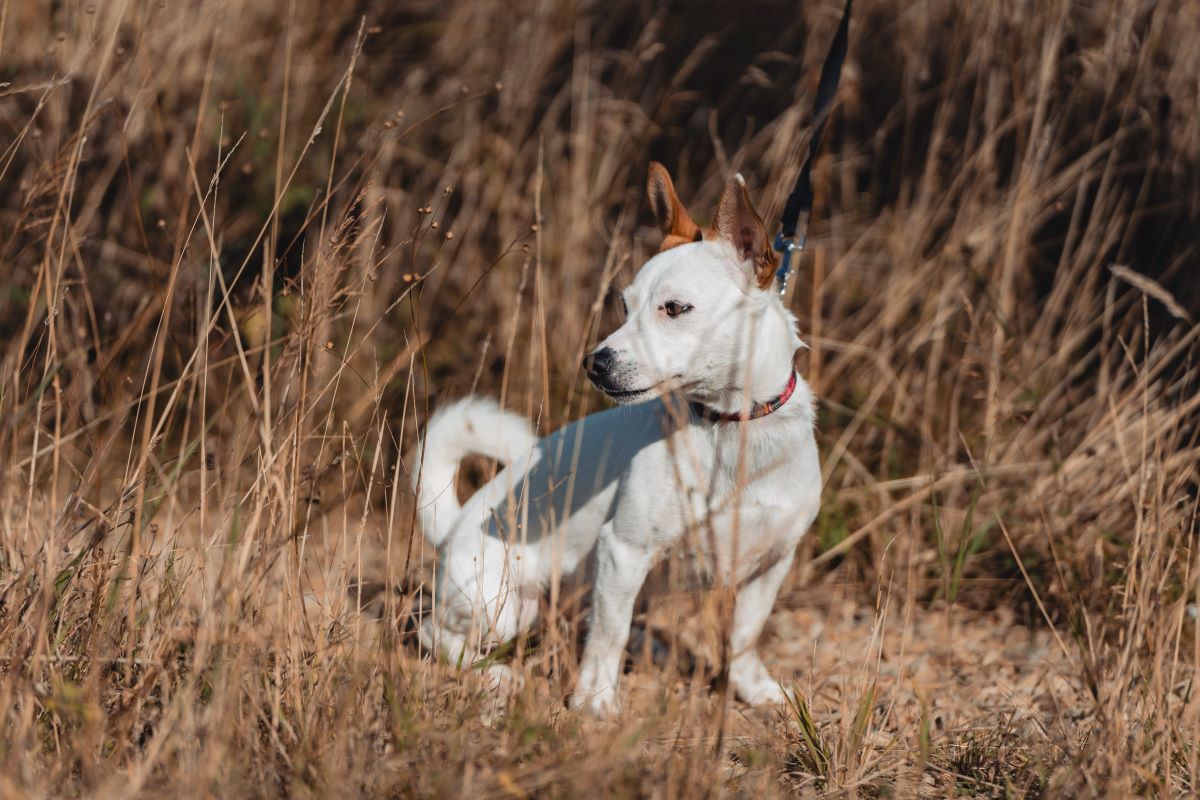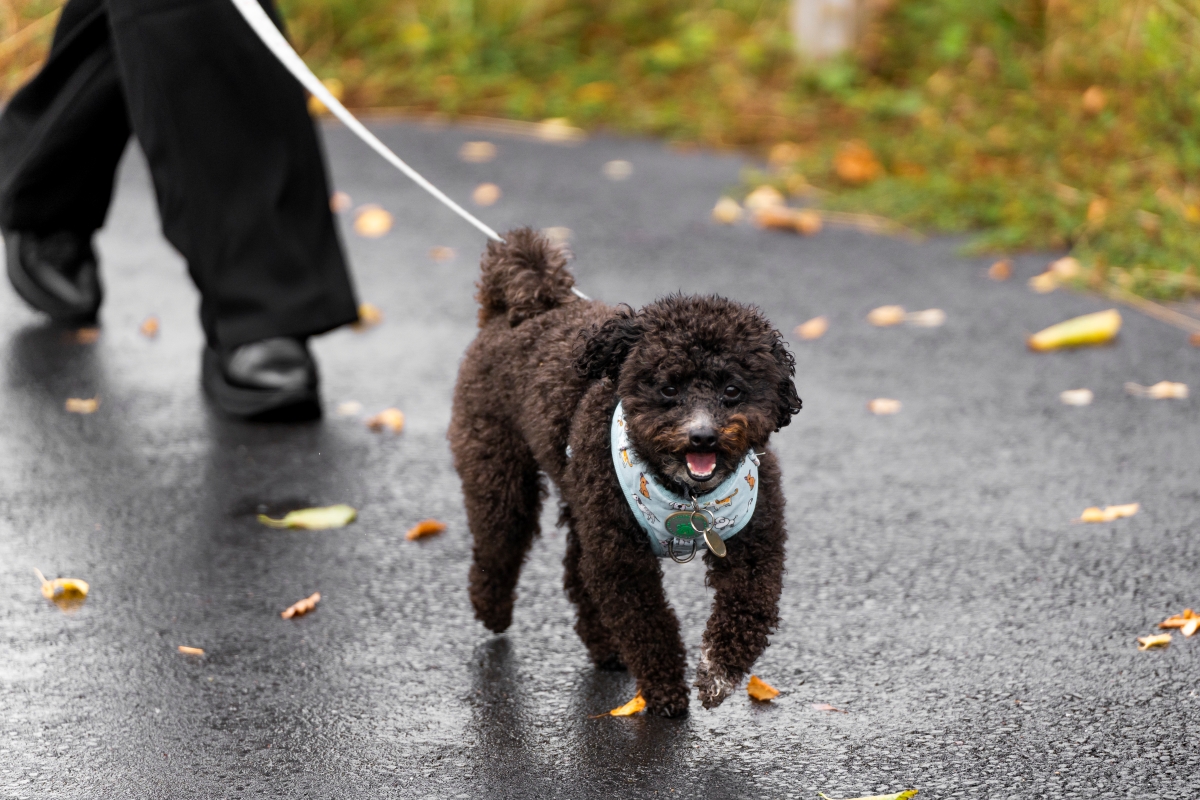Did you know that while a leisurely stroll in the countryside can be a treat for your dog, it might also expose them to the hidden menace of ticks? But the real concern isn't just the ticks themselves – it's the diseases they can carry. In this article, we'll take a closer look at why ticks are so dangerous and how to know if your dog has been exposed to them. We'll also discuss some of the measures you can take to keep your dog safe from these dangerous parasites.

What Are Ticks?
First, let's go through the basics. Ticks are eight-legged arachnids, belonging to the same family as spiders. Before feeding, they measure around 5mm in size, so can sometimes be difficult to spot on dogs. Their immature stages – larvae and nymphs – are even tinier and may not be visible at all.
The Tick Lifecycle
Ticks pass through several stages of development in their lifecycle, starting with an adult female tick laying thousands of eggs before dying. These hatch into larvae which crawl onto a host to feed, and develop into nymphs that continue to feed until they grow into adults. The adults then search for another host to feed on as much as possible, before mating and continuing the cycle.
Where Ticks Live
Many tick species live in grassy and wooded areas, where they wait to attach themselves to passing hosts such as dogs, cats, or even humans. They're a threat all year round but are most active in the spring and autumn when temperatures are milder.
How Ticks Feed
After attaching themselves to a host, ticks use their sharp mouthparts to cut through the skin and feed on the host's blood. They usually choose areas on a dog with thin hair, like the face, ears, nose, between the paws, the groin, and armpits.
Species of Ticks
There are around 900 species of ticks found worldwide, and they tend to be most prevalent in warmer climates. But through a combination of climate change, pet importation, and increased pet travel, even cooler countries are starting to see more exotic ticks which were rarely seen before. This means that it's more important than ever for us to safeguard our dogs against these pests.
What Are the Signs Your Dog Has a Tick?
A single tick bite can cause pain and irritation for your dog. As a result, they may scratch the area, leading to skin damage and secondary infections. Dogs that are infested by larger numbers of ticks may also experience blood loss. In the most extreme cases, heavy infestations can be a risk to life.
A tick bite can cause pain and irritation for your dog. Dogs with a larger number of ticks may also experience blood loss. But the biggest risk is the transmission of tick-borne diseases.
However, the biggest risk for most dogs is the transmission of tick-borne diseases. In the next section, we'll explore some of the illnesses that ticks can transmit and the symptoms to look out for.
What Diseases Can Ticks Transmit?
Ticks can transmit a range of serious diseases to your dog, some of which can even be passed on to humans. These include Lyme disease, Anaplasmosis, and Babesiosis. Let's take a look at each of these in more detail.
- Lyme disease
An infection caused by Borrelia, a type of bacteria, that affects both dogs and humans. While dogs may not always show symptoms, it can result in lameness, loss of appetite, depression, swollen lymph nodes, fatigue, and even kidney failure in extreme cases. If caught early, Lyme disease can be treated with antibiotics. There's also a vaccine available for dogs. Please consult with your vet for more information and advice.
- Anaplasmosis
Anaplasmosis and other similar diseases are caused by parasitic bacteria that reside in the red blood cells, white blood cells, and platelets of dogs. These bacteria can cause cell destruction resulting in anaemia, a low platelet count, or a low white blood cell count. This can lead to fever, depression, secondary infections, bleeding, and weakness. Thankfully, these diseases can be treated with antibiotics.
- Babesiosis
Babesiosis is a disease caused by a parasite that lives in red blood cells. It leads to anaemia and can cause dogs to become jaundiced, collapse, experience liver and kidney failure, and even die if left untreated. Babesiosis used to be rare in many countries, but it's becoming more common. The good news is that it can be effectively managed with specific medications.

There are other tick-borne diseases found in different parts of the world and in other species that could become more common as a result of climate change. It's also important to be aware that dogs can have more than one tick-borne disease at the same time. In the following sections, we'll look at how to detect and prevent these pesky parasites.
How to Treat Ticks on Dogs?
Ticks can be identified by looking at your pet's fur, feeling for lumps and bumps on their skin, or noticing if your dog is itching more than usual.
If you do find a tick, it's important to remove it as soon as possible. This should be done carefully using a tick remover tool, which looks like a small plastic hook and can be bought at your local veterinary practice or pet store. Removing ticks in any other way, for example with your fingers, can leave their mouthparts behind in the skin and increase the risk of infection.
Removing a tick incorrectly also makes it more likely that the tick's infected saliva may enter your dog's bloodstream. If you're unsure how to remove a tick, ask your vet – they can demonstrate or remove the tick for you. Never remove a tick by crushing, burning, or suffocating it in gel.
The best way to prevent your dog from getting ticks, and the illnesses they carry, is by using a tick protection product – generally a tablet, collar, or spot-on medicine. They will kill any tick that jumps onto your pet.
How to Prevent Dog Ticks
The best way to prevent your dog from getting ticks, and the illnesses they carry, is by using a tick protection product. These come in tablet, collar, or spot-on medication form. Tick treatments will kill any tick that jumps onto your pet to feed, reducing the risk that they'll spread disease.
If your dog spends time outdoors in areas where ticks may be present, or travels with you internationally, it's especially important to use tick protection. The type of product you use will depend on your dog's lifestyle and risk factors, so speak to your vet about what's best for your dog.
Keep in mind that humans are also at risk. Make sure to cover your arms and legs, and check yourself after a walk. If you find a tick, avoid removing it by hand, and consult your doctor.
After each walk in areas where ticks may be present, carefully check your dog's fur for ticks. The sooner you remove them, the lower the risk of tick-borne diseases spreading. If you're particularly concerned, consider avoiding these areas altogether during spring and autumn.
But for the most part, thanks to the range of products out there, with the appropriate preventative measures you and your dog can continue to enjoy your walks, tick-free and with peace of mind.
Explore more on these topics
Medication Reminder
Set up medication reminders for your pet to ensure they never miss a dose.
Thank you for setting up your medication reminder!
Something went wrong!
Select a country and language
Regulatory constraints and medical practices vary from location to location. Consequently, the information provided on the site in which you enter may not be suitable for use at your location.
Asia Pacific
Europe















Latin America







North America
You're visiting the ZP
What would you like to do?
You're visiting Zoetis Pets
What would you like to do?









